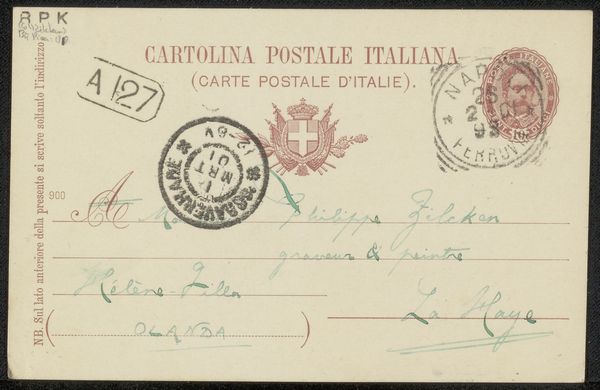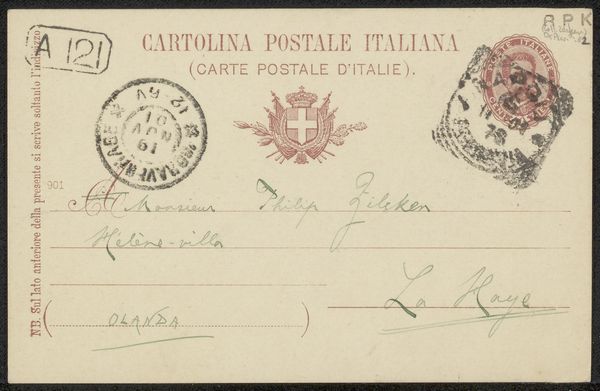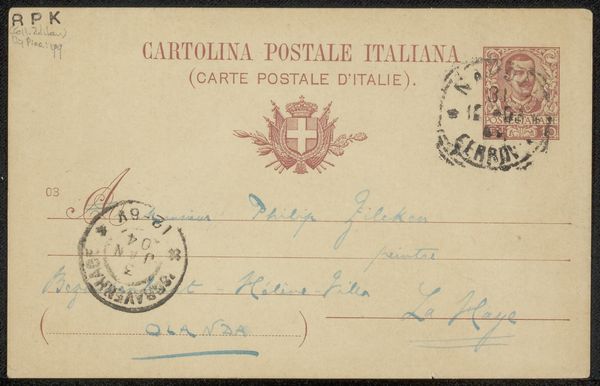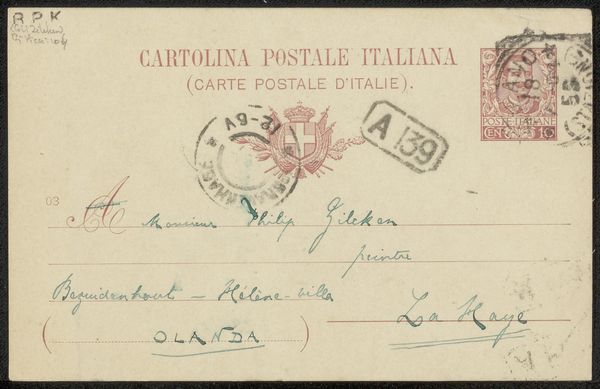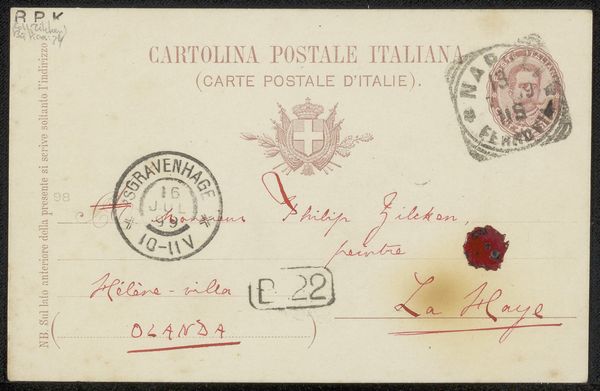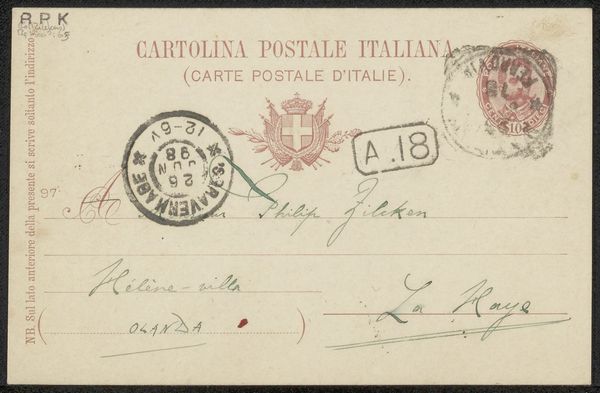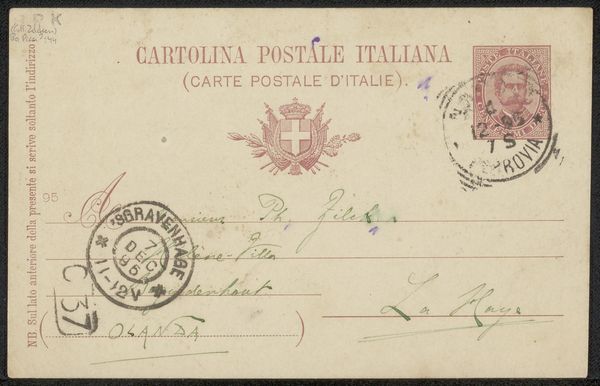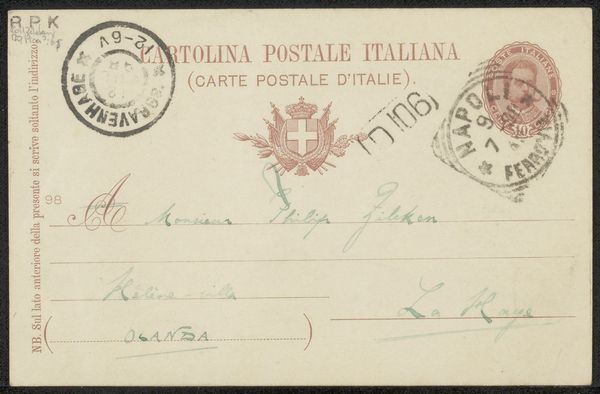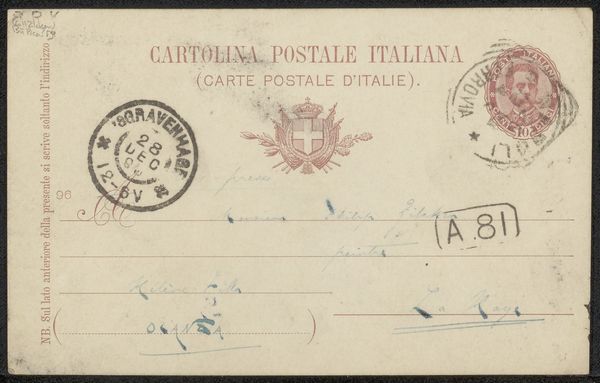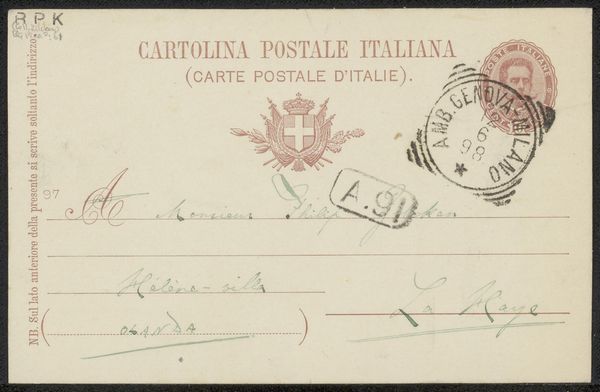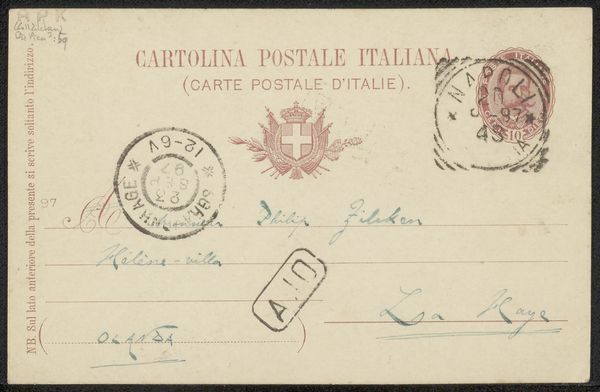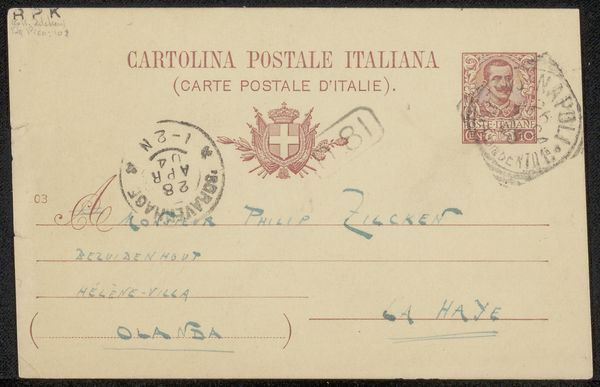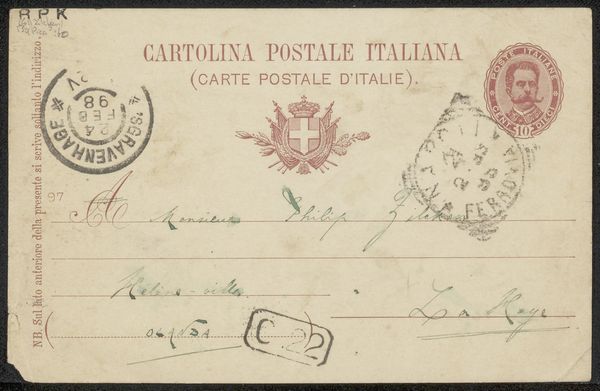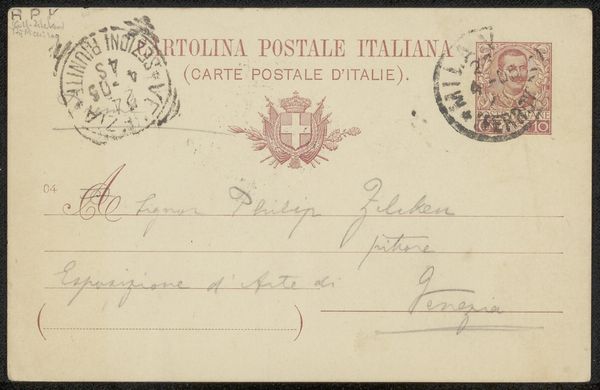
paper, ink
#
paper
#
ink
#
calligraphy
Copyright: Rijks Museum: Open Domain
Curator: Looking at this Italian postcard from around 1899, a "Briefkaart aan Philip Zilcken," presumably sent by Vittorio Pica. My initial feeling is nostalgic, there is something really sentimental and melancholic in these short writings. The ink is faded, there are several stamps...It feels incredibly tactile and transient. Editor: Absolutely, it's a really evocative artifact! Let’s consider the materials involved: we have the paper itself, likely quite different from today's machine-produced stock and the ink that reveals much about the writer's hand, pressure, and the tool used. Note the postal markings too; these small imprints become powerful signifiers of distribution and the bureaucracy of the mail system at the time. Curator: You're right. We often overlook the infrastructure. Who was Philip Zilcken? This was before mass global communications; who you corresponded with and how was highly curated. Receiving a letter like this from Pica, a well-regarded art critic... it might mean the world. Editor: Zilcken was actually a Dutch artist and critic; Pica was one of his Italian counterparts, if you will. Thinking about that relationship, and how they fostered international artistic movements at the turn of the century by simply reaching out via such handwritten letters helps understand what communication really meant in the artistic ecosystem. Curator: Precisely! And that brings another aspect—calligraphy as craft. How Pica shapes the text and interacts with the imposed structure of the postal card reveals attention, intentionality, care in communication. The texture here invites tactile scrutiny, even on a digital reproduction. It embodies social capital. Editor: Beyond the aesthetics, one may even think of paper production. What industry and labor are involved at that time. This small postal card is really at the heart of complex economical exchange. Curator: These small traces create huge impressions...it’s funny how something so minor speaks so strongly. It leaves me reflecting on the human traces we leave behind and on how our current forms of rapid communication won't leave the same lingering essence, the physicality and personal quality, you know? Editor: True. It encourages us to contemplate both the precious nature and possible loss of personal records—a testament of human exchange that may vanish in our current world of data.
Comments
No comments
Be the first to comment and join the conversation on the ultimate creative platform.
